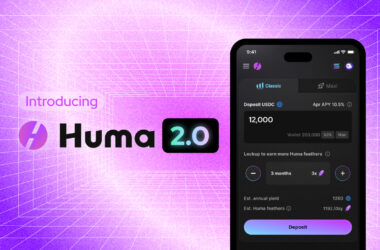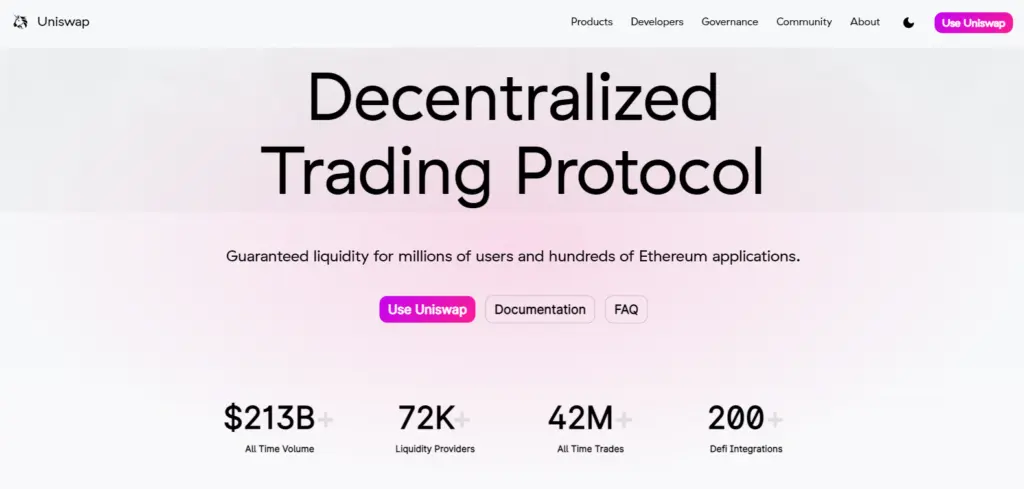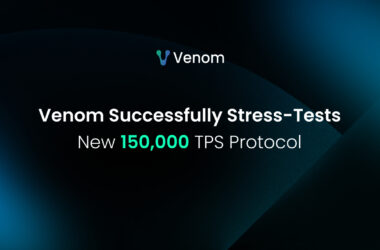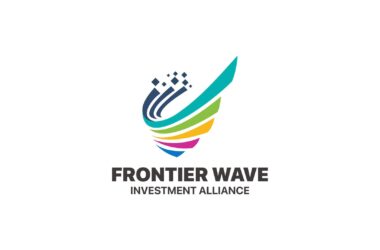Table of Contents
What is Uniswap?
With the traditional stock exchanges being the crucial source of market liquidity as well as being the backbone of the global financial system, cryptocurrency exchanges are here to introduce radical changes in the world of modern finance.
Uniswap is a kind of decentralized cryptocurrency exchange that falls under the ownership of several entities rather than just one. Being rightly accredited to be one of the largest decentralized cryptocurrency exchanges it is also a leader of the decentralized finance space. It is based on a new trading model which is also known as automated liquidity protocol.
This facility makes it possible to conduct automated transactions between cryptocurrency tokens on the Ethereum blockchain by using smart contracts. In the previous year, Uniswap became the largest decentralized exchange and the fourth-largest cryptocurrency exchange overall by daily trading volume.
The platform was introduced in the year 2018 on top of the Ethereum blockchain which resulted in the benefit of making it compatible with all ERC 20 tokens and infrastructure such as wallet service.
The biggest benefit of Uniswap is it is open-source. This allows anyone to copy the code to create their own decentralized exchanges and also allowing users to list tokens for free.
Further, since Uniswap is a decentralized exchange it also makes it convenient for users to maintain control of their funds all the time. It is a major advantage as opposed to centralized exchange that involves traders giving up control of private keys so that order can be logged on an internal database rather than blockchain making it more time-consuming as well as expensive.
How Does Uniswap Work?
Uniswap runs on two smart contracts: An Exchange and a factory contract. The two smart contracts are automatic computer programs designed to perform automatic functions when certain conditions are met.
Automated Liquidity Protocol
One major benefit of Uniswap is that it solves the liquidity problem of centralized exchanges by the automated liquidity protocol. This further works by providing people who are working on the exchange to become liquidity providers.
The users pool the money to create a fund that is used to execute the trades being done on the platform. Every listed token has its own pool which the users can contribute to. The prices of each token are determined by a computer with the help of using a mathematical algorithm.
One major benefit of this entire process is that the buyer or seller does not have to wait for an opposite party to complete the trade.
The trade can be executed at any time because the price is known but only liquidity has to be ensured. As an example, if someone contributes $10,000 to a liquidity pool that already had $100,000 a token of 10% of the pool would be allotted to that person.
Service charges are 0.3% for every trade which takes place on the platform and sends it to a liquidity reserve. If a liquidity provider decides to exit they are entitled to receive a portion of the total fees from the reserve relative to the amount initially contributed by them to the pool. The token is also destroyed.
Determining token price in Uniswap
The Uniswap system does not use the typical order book system in which the price is determined by the highest buyer and lowest seller.
Uniswap uses the automated market maker system. In this method, the price of an asset is based on its supply and demand by using a long-standing mathematical equation. The price of the coin increases and decreases depending on the number of coins being there in the respective pool. Following is the equation to determine token price:
x*y=k where the amount of token A is x and the amount of token B is y. K is a constant value which is a number that does not change.
Arbitrage in Uniswap
These arbitrage traders form the most essential component of the Uniswap ecosystem. The arbitrage traders regulate the price discrepancies across multiple exchanges and use them to secure a profit.
This is important because large trades cause imbalances in the prices, so arbitrage traders buy or sells the tokens which lead to an increase or decrease in the price. This practice is continued until the price of the token rebalances in line with the price on other exchanges and no more profit can be made.
Benefits of Uniswap
There are various and significant benefits of using Uniswap for users around the world and the Uniswap market as a whole.
- Flexible
It is easy to use making it a hassle-free swap between two Ethereum assets against the underlying liquidity pool using this network. Moreover, any project can create or seed a market by supplying it with an equal value of two ERC-20 tokens being paired. However, on the flip side, one needs to keep a check of possible scams and rug pull tokens which are also part of the network.
- Censorship resistance
Uniswap does not possess any central authority for blocking users or withhold the funds. There is no limit or cap to determine whether a person has traded too much or what companies are available to invest in. The system is purely established on the basis of decentralization which is the essence of the system and it does ensure that it is properly followed.
- More trading options
Due to its decentralized nature, price differences arise between token listings and that of centralized exchanges. This benefits the arbitrage traders who can reap huge benefits.
- Secure
It is an open-source project which has been through serious review by the development community. The smart contract coding is secure and the platform is non-custodial which makes it safe from hackers attack.
Conclusion of Uniswap
Uniswap has been a game-changer and has helped to push large scale cryptocurrency adoption. The level of success that it has achieved by this decentralized network is incomparable. With its bright future and its global adoption, Uniswap will hold great market value in the future.
Have you tested it? Leave your opinion below:

















Recent Comments